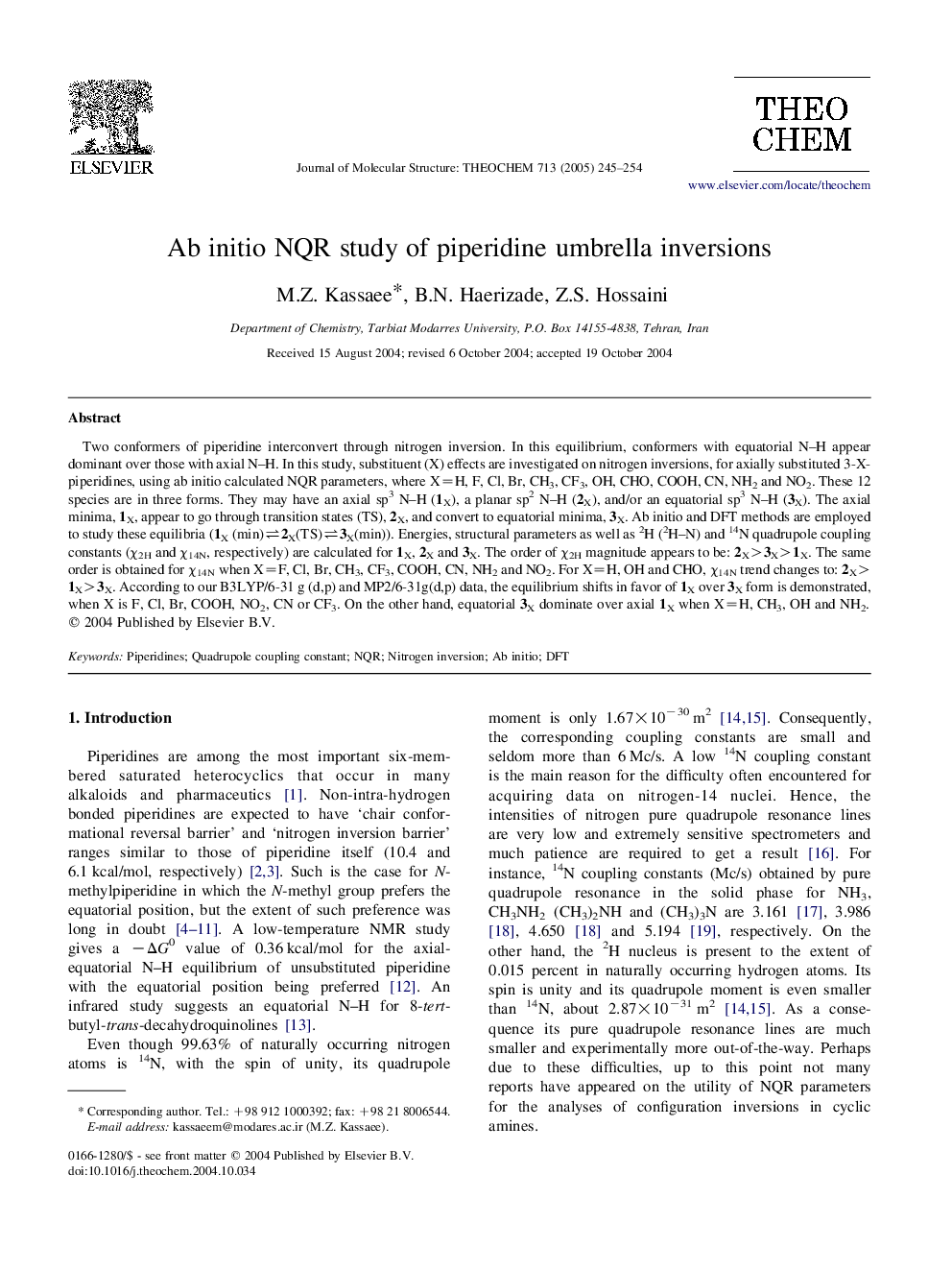| Article ID | Journal | Published Year | Pages | File Type |
|---|---|---|---|---|
| 9590848 | Journal of Molecular Structure: THEOCHEM | 2005 | 10 Pages |
Abstract
Two conformers of piperidine interconvert through nitrogen inversion. In this equilibrium, conformers with equatorial N-H appear dominant over those with axial N-H. In this study, substituent (X) effects are investigated on nitrogen inversions, for axially substituted 3-X-piperidines, using ab initio calculated NQR parameters, where X=H, F, Cl, Br, CH3, CF3, OH, CHO, COOH, CN, NH2 and NO2. These 12 species are in three forms. They may have an axial sp3 N-H (1X), a planar sp2 N-H (2X), and/or an equatorial sp3 N-H (3X). The axial minima, 1X, appear to go through transition states (TS), 2X, and convert to equatorial minima, 3X. Ab initio and DFT methods are employed to study these equilibria (1X (min)â2X(TS)â3X(min)). Energies, structural parameters as well as 2H (2H-N) and 14N quadrupole coupling constants (Ï2H and Ï14N, respectively) are calculated for 1X, 2X and 3X. The order of Ï2H magnitude appears to be: 2X>3X>1X. The same order is obtained for Ï14N when X=F, Cl, Br, CH3, CF3, COOH, CN, NH2 and NO2. For X=H, OH and CHO, Ï14N trend changes to: 2X>1X>3X. According to our B3LYP/6-31Â g (d,p) and MP2/6-31g(d,p) data, the equilibrium shifts in favor of 1X over 3X form is demonstrated, when X is F, Cl, Br, COOH, NO2, CN or CF3. On the other hand, equatorial 3X dominate over axial 1X when X=H, CH3, OH and NH2.
Related Topics
Physical Sciences and Engineering
Chemistry
Physical and Theoretical Chemistry
Authors
M.Z. Kassaee, B.N. Haerizade, Z.S. Hossaini,
